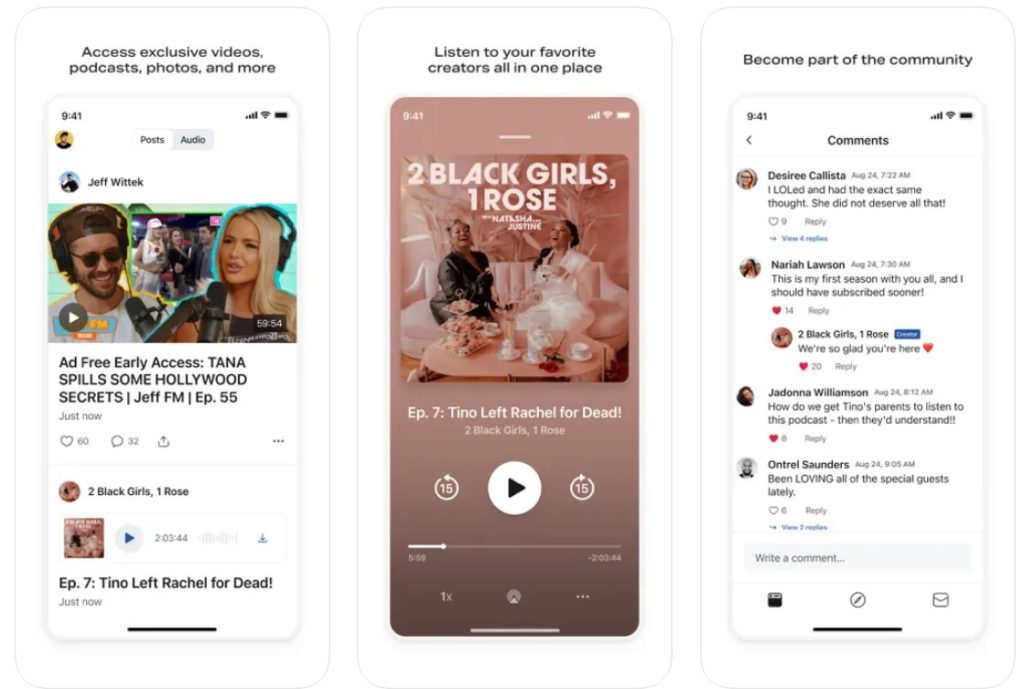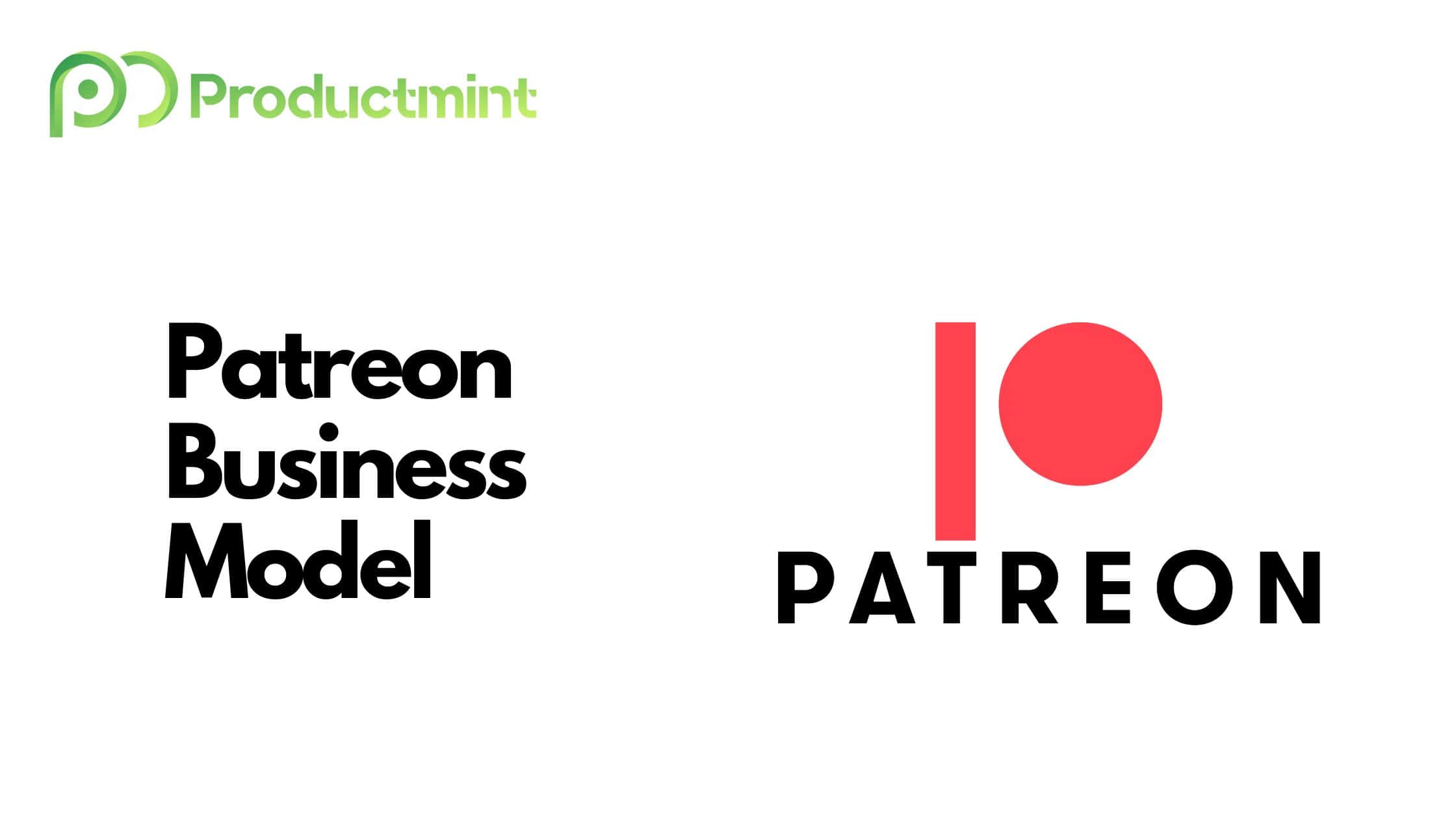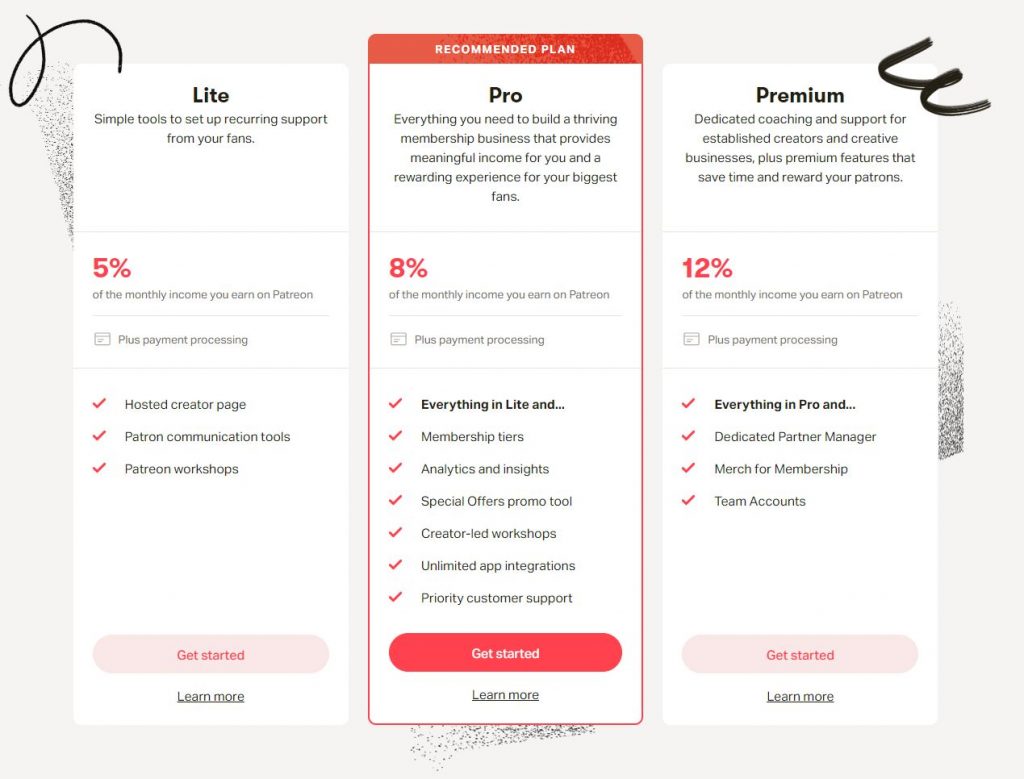Executive Summary:
Patreon is a membership platform that allows creators to be paid by their fans on a subscription basis. Supporters are referred to as patrons.
Patreon makes money via variable as well as a payment processing fees. The fees are paid by creators and dependent upon the plan chosen.
Founded in 2013, Patreon has become one of the leading platforms in the crowdfunding space. It has raised over $413 million in funding and is currently valued at $4 billion.
What Is Patreon?
Patreon is a crowdfunding platform that allows creators to be paid by fans and other supporters on a membership-basis. These supporters are referred to as patrons.
Patreon works together with a variety of content creators, including podcasters, YouTubers, nonprofits, musicians, local businesses, and more.
In exchange for becoming a patron, fans will receive a variety of perks such as:
- Early or exclusive access to content
- Shoutouts to supporters
- Exclusive access to events
- Directly engaging with creators
On top of that, Patreon provides a breadth of educational tools (so-called kits) to maximize fan engagement and sign-ups.
Furthermore, Patreon can be integrated with a variety of tools such as Discord, Mailchimp, or Wix, which enables creators to plug their existing business tools into the platform.
Patreon can be accessed via the company’s website as well as its mobile phone applications (available on Android and iOS).
A Short History Of Patreon
Patreon, headquartered in San Francisco, California, was founded in 2013 by Jack Conte (CEO) and Sam Yam (CTO).
Both founders underwent their education at Stanford (where they were roommates and ultimately became friends), yet their paths prior to launching Patreon couldn’t have been more different.
Yam, on the one hand, continued his Stanford studies, pursuing a Master’s in Computer Science (Marc Andreessen actually wrote his recommendation letter).
He eventually took a leave of absence and became one of the first developers at the social-mapping startup Loopt. In 2012, Loopt was acquired by Green Dot for a combined $43 million, but Yam had already moved on.
Three years prior, in 2009, he cofounded AdWhirl, a platform for mobile developers that allowed them to serve ads and distribute their apps via different channels.
At its peak, AdWhirl processed over 3 billion ads per month. Just a year after launch, in 2010, AdWhirl was acquired by AdMob (for an undisclosed amount), which Google then purchased a few months later.
The exit netted Yam a nice financial cushion, which he used to dabble in different ideas. For a few months, he worked out of the Dogpatch Labs incubator where he was sitting alongside Kevin Systrom and Mike Krieger who, at the time, were working on the first version of Instagram.
Yam eventually settled on an idea he was excited about: an online marketplace for freelance photographers named OurSpot. But as fortune would have it, that startup was never released to the public.
Instead, Yam decided to partner up with Conte on an idea he brought to him a few weeks prior. But let’s first rewind the tape a little.
While Yam went on the traditional engineering and entrepreneurship route, Conte’s claim to fame has been a little different.
After wrapping up his Music studies at Stanford, he went on to work as a full-time musician. In 2008, he started a band with his then-girlfriend (and now wife) Nataly Dawn called Pomplamoose.
The duo quickly made a name for themselves, amassing a solid 6 digit following on various platforms such as Spotify. They even received offers from various major labels but decided to remain independent.
Unfortunately, life as an independent artist isn’t as glamorous as it always sounds. A few years into their music careers, the pair grew increasingly frustrated with the small amounts of ad revenue they were generating from their music videos.
That frustration reached its all-time peak when Conte launched a music video named ‘Pedals’, which cost him $10,000 to make (and maxing out his credit cards at the same time) only to receive a few hundred bucks in return.
The lack of earnings was ultimately what led him to start working on the concept for Patreon. He reached out to his old roommate Yam knowing that he would need some technical prowess to build his idea.
Patreon launched to the public in June 2013. That same month, mainly due to Yam’s connections in the Valley, the team was able to raise a $700,000 seed round (valuing Patreon at $5.5 million).
By 2014, Patreon’s team added another $2.1 million and $15 million to the startup’s balance sheet, respectively. The funding was raised on the backbone of the more than 100,000 users that registered for Patreon’s service in the first year.
What allowed Patreon to grow the way it did was (and still is) its obsessive focus towards serving their creators. In 2017, for instance, the company launched a Salesforce-like CRM tool for creators, allowing them to assess how well they perform (and find means for improvement).
It also integrates with other tools such as Zendesk or Slack, which allows its creators to continue utilizing the tools that they run for their business.
The continuous growth put the company on the startup map – and subject to copycats. Most notably, in 2019, Facebook introduced its own fan support service. The new product was directly embedded into the content and allowed page owners to ask their followers for support.
Regrettably, Patreon experienced some major hiccups on its road to success. In 2015, its website was hacked. Some of their user’s personal information, including registered names and email addresses, was retrieved by a group of hackers named #SuperExtremeShitpostingTeam. Their motive? None other than “doing it for the lulz”.
Two years later, in 2017, Patreon angered many of its creators as a result of a new fee structure the company’s CEO Conte announced in a blog post. The new fee structure would’ve made smaller contributions, ranging between $1 to $2, disproportionally more expensive.
As a result, patrons would’ve likely stopped their contributions, which in turn would have a severe negative impact on many creators. Being a creator-led platform, Patreon immediately dropped its proposal and promised to engage more with its creators when deciding on new product launches.
Furthermore, Patreon started to immerse itself in the world of politics due to the company’s ever-increasing influence in the creator world. Over the years, its content moderation team banned multiple accounts that were linked to hate speech propaganda and other conspiracy theories. In 2020, for instance, it removed various accounts related to the right-wing group QAnon.
However, the Covid pandemic did allow Patreon to substantially grow the size of its business. Its leadership team was able to raise multiple rounds of funding throughout 2020 and 2021, propelling the firm’s valuation to as much as $4 billion.
Unfortunately, the go-go days wouldn’t last forever. The ongoing recessionary environment in 2022 forced Patreon to lay off close to 20 percent of its staff in September, including the whole security team.
How Does Patreon Make Money?
Patreon makes money via a variable fee that it charges to creators. The firm has a tiered fee structure separated into 3 distinctive plans: Lite, Pro, and Premium.
Creators pay either a 5 percent, 8 percent, or 12 percent fee on the monthly income they earn on Patreon, depending on the chosen plan. Patrons, in turn, pay a monthly subscription fee to support their favorite creators.
Each of these plans then comes with its own set of features, such as analytics reports, workshops, priority support, dedicated account managers, or unlimited third-party app integrations.
Especially the Premium tier allows creators to find additional means of monetization. For instance, they can start selling branded merchandise (an offering that resulted from Patreon’s acquisition of Kit in June 2018), with fulfillment being handled by Patreon’s backend.
And creators will gladly pay those fees. After all, subscription revenue is substantially more lucrative on a per-user basis than advertising. Additionally, creators have better control of how fans engage with their content instead of having it tainted by unwanted ads.
Apart from the subscription fees, Patreon also collects payment processing fees every time a patron makes a contribution. For micropayments (< $3), it charges 5 percent plus $0.10. For any payments above $3, the firm charges 2.9 percent plus $0.30.
Payment processing partners include Mastercard, Visa, American Express, or PayPal. In all likeliness, the fees are charged at cost, meaning Patreon does not make a profit on them.
In recent years, a number of different platforms have adopted a similar creator-led subscription model, including the likes of Medium, Substack, or Quora.
Interestingly, charging a fee isn’t common everywhere. Patreon competitor Ko-fi has amassed a creator base of more than a million members by not charging any fees.
The Patreon Business Model Explained
Now that we’ve established how Patreon makes money, let’s take a closer look at the type of business model strategy it pursues.
Traditionally, being a full-time creator was nearly impossible. Access to money-making opportunities was gated by institutions such as Hollywood production studios, talent agencies, TV stations, and so forth.
The internet has largely democratized access to both capital and larger audiences. One of the most powerful examples of that democratization is GoFundMe, which empowered regular people to raise millions of dollars without having to set up expensive fundraisers.
Essentially, the pendulum has swung from powerful institutions to the individual. In the case of Patreon, creators remain the lifeblood of everything it does.
After all, Patreon succeeds in direct proportion to how well the creators on its platform are doing, meaning the more money they make, the more revenue Patreon generates.
As a result, Patreon is incentivized to provide them with as many growth and monetization tools as possible.
Those include membership tiers, special offers promo options, integrations with various software tools like MailChimp or Zapier, access to creator workshops and analytics, dedicated partner managers, and more.
Additionally, Patreon has begun to launch features that minimize the dependence creators have on other platforms. In November 2022, for instance, the firm introduced a native video player that would appear in the feed of fans (see below).

Instead of diminished exposure due to algorithmic changes made by YouTube and the likes, content is simply shown in chronological order.
Moreover, fans can directly engage with likeminded followers and not have their experience tainted by bots or other malicious actors. Nevertheless, for now creators do still rely on platforms to drive growth.
This may be a key competitive disadvantage going forward. Platforms like Substack and Twitter do offer substantially more exposure for (in this case text-based) creators. Meanwhile, competitors such as Ko-fi do charge substantially less for similar services.
On the other hand, Patreon does still benefit from essentially being the first company of its kind that allowed creators to monetize their audiences via memberships.
And its various integrations and tools do provide some level of creator lock-in effects, which means that Patreon can always operate from a base level of revenue generation that can be funneled back into further growing its business.
Another key aspect that Patreon supports creators who may have been demonetized or even booted off by platforms. Barring any law-breaking behavior, the platform does try to accommodate creators in more sensitive niches.
Back in September 2021, for instance, it rolled out various tools to help adult content creators to be in accordance with new Mastercard policies. Given that competitors like OnlyFans are generating billions of dollars in revenue, supporting less child-friendly creators remains big business.
Patreon will likely continue to roll out features that aid creators in their ability to grow their audience, engage their community, and subsequently monetize it.
Patreon Funding, Valuation & Revenue
According to Crunchbase, Patreon has raised a total of $413.3 million across 7 rounds of venture capital funding.
Prominent investors include New Enterprise Associates, Index Ventures, Wellington Management, Thrive Capital, and many more.
Patreon’s valuation skyrocketed to $4 billion after the company’s Series F raise in April 2021. This puts Patreon officially in the unicorn club.
In 2021, Patreon processed payments worth $2 billion. Given its fee structure, the firm generates revenues in the ballpark of $100 million (5 percent) to $240 million (12 percent) for the year.

